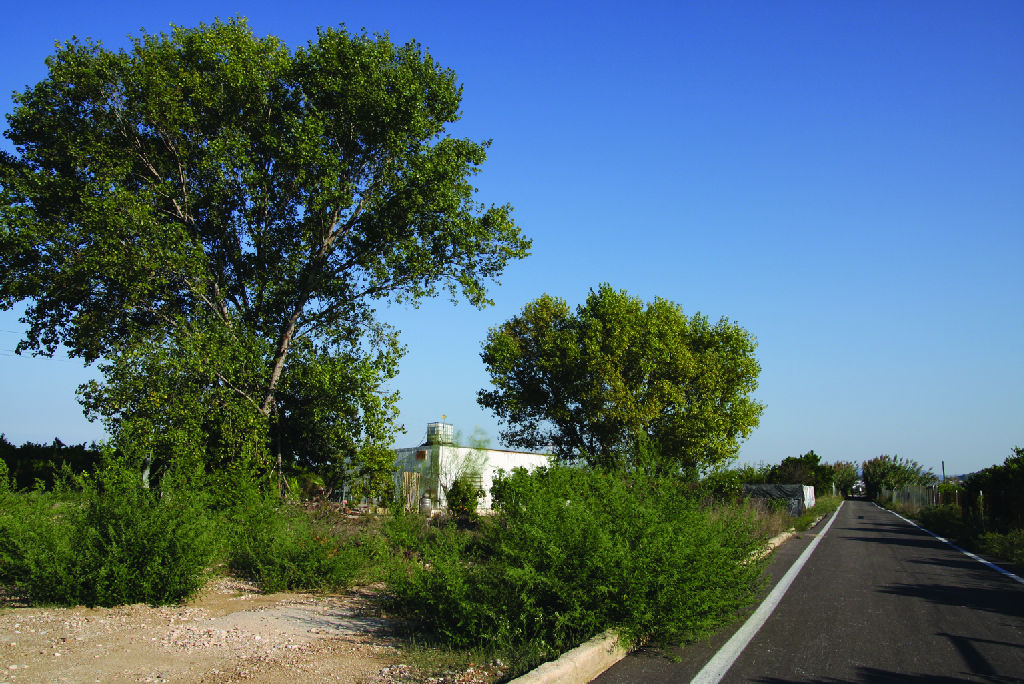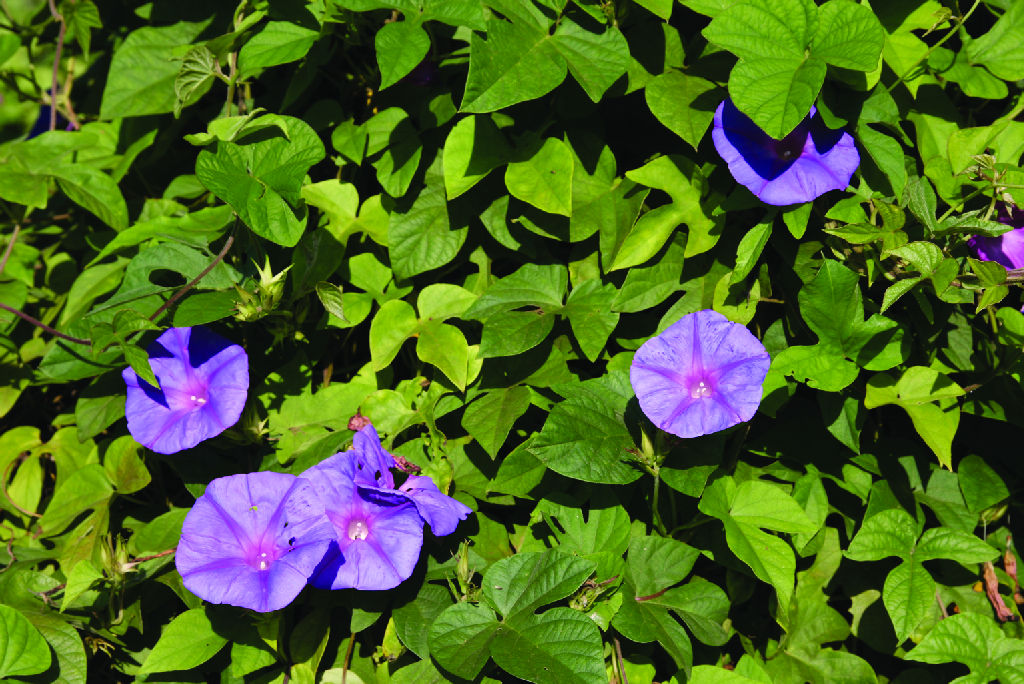La Safor Nature Trail
Description

On the way to Las Fallas de Gandía among irrigation canals and orange trees
La Safor Nature Trail has been established on the old route of the Carcaixent-Dénia railway, and is regarded as the train with the oldest narrow track on the Peninsula, as it was begun in 1864, a time when the tram that operated on that first section worked with animal traction.
The route begins in the town of Gandía, next to La Estación Park close to the Tourist Information Bureau, where an old restored locomotive is displayed as a sculpture. After crossing the street, behind the Tourist Information Bureau, there is a broad, tree-lined pedestrian avenue, where the bicycle lane and the Nature Trail can be found.
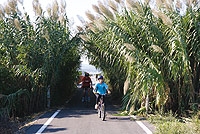
Following this lane and after crossing the road at some traffic lights, a pedestrian crossing and a crossing for the Nature Trail, you come to a crossroads where you can see a graffiti-painted stone wall that leads to a bridge over the River Serpis, parallel to another on the left which is for motor vehicles. When you have crossed the bridge, there is a roundabout where you need to carry on straight ahead, in the direction of a wooden house point of sale, where you take the path that goes straight to Oliva, without any turn-offs whatsoever.
During the next stretch, you can see the road that leads to Bellreguard, which alters its course little by little to the right of the route. Along this itinerary, there are different irrigation infrastructures for orange tree plots, such as irrigation canals and siphons.
On following the Trail, you come to a small bridge with a metal rail that enables you to cross the road that links the town of Bellreguard to its beach buildings. In the whole of this area of the Levante, residential areas along the coastline, with their related traditional town centres in the vegetable garden area, are typical.
The trail continues along a straight, easy route until it reaches another bridge that crosses a main irrigation canal that directs the flow of the waters of the River Serpis. At this point, you can see thick reed vegetation (Arundo donax), which evidences the presence of abundant water on the land.
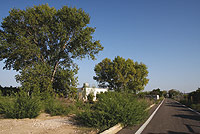
Along the track, before reaching the underpass that crosses under the road to Piles, you will come to some large poplars (Populus sp.) that invite you to rest in their shade. After crossing this underpass, you continue straight ahead to the point where another poplar grove allows trail users to enjoy a refreshing rest once again.
The Trail continues and, a little further on, you can see the town of Oliva, which you can reach easily either on foot or by cycling along a straight flatland that continues until the end of the Nature Trail.
Once in Oliva, and if you should have any free time, you can continue your walk (although now off the Nature Trail) as far as the beach of Oliva, where you can rest, walk or have a pleasant swim in the warm Mediterranean sea. Furthermore, if the trail user’s interest should be focussed on enjoying nature and, specifically, on bird watching, you can visit the nearby Marjal de Pego-Oliva Natural Park.
Sites of interest
Map
Puntos de Interés
Hidrografía
Vegetación
Profile
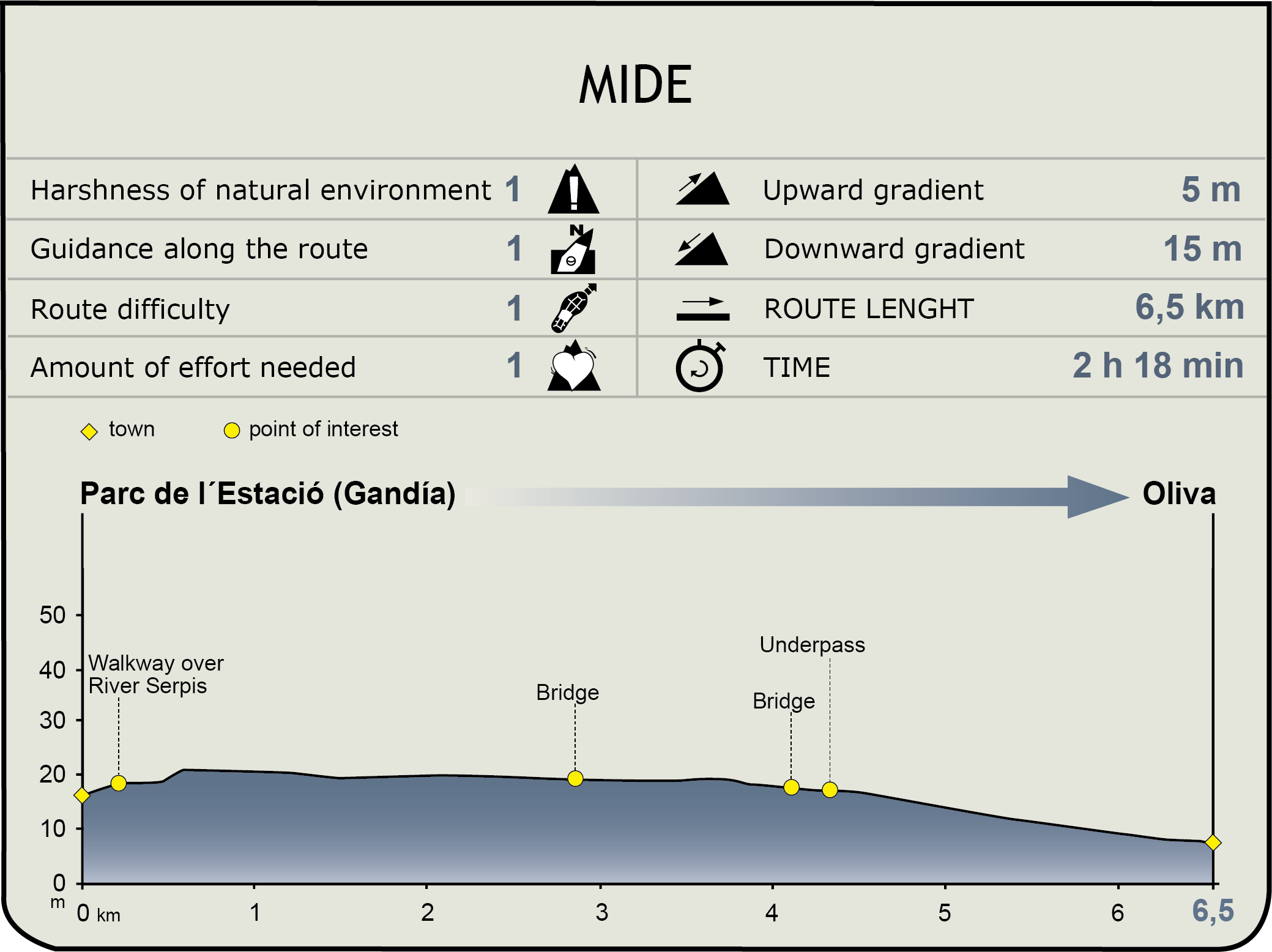
MIDE (Method for the Information of Excursions)
Featured
Further information
Marjal de Pego-Oliva Natural Park
This park is located on the coast of the Valle de Pego, between the sierras of Mostalla and Segaria, where the sources of the Rivers Bullent-Vedat and Racons-Molinell can be found.
In order to visit this Natural Space, it is advisable to take a backpack containing some small binoculars and a bird guide book. With this material and a little patience, you are bound to identify a good number of wetland bird species, which are ever-changing depending on the time of the year.
Las Fallas
Las Fallas of Gandía (16-19 March), declared to be of National Tourist Interest, are traditional festivities that are more than one hundred years old and which stem from an Arab custom of making bonfires, undoubtedly imitated by the Christian carpenters’ guild on the eve of San José, when chips, shavings and sawdust left over from the wood they used were burnt on large bonfires. In any event, the old Las Fallas festivities did not have the critical and mocking tone of the monumental constructions that fill the streets of the town today.
Las Fallas currently involve the essential participation of a large number of citizen associations that usually gather together by districts and which prepare diverse cultural activities throughout the year. Each of these associations appoints their respective Queens, chosen at the beginning of the celebration.
Following the selection of the Queen of Las Fallas, her presentation takes place followed by "la Crida", the parades, "Les Albaes" and the display of the "Ninot Indultat", where each Fallas group presents a Children’s Falla monument and an Adult’s Falla monument. The winner is the only construction that escapes the flames on the night of San José.
The "Plantà" of Las Fallas takes place on the night of March 15, when the festivities begin. At 8 a.m. on March 16, the "Despertà" takes place and, from then onwards, everyone can enjoy a tour of the monuments of Las Fallas across the whole city.
The celebration ends on March 19, the festivity of San José, the patron saint of Valencia. The Fallas committees usually hold a mass in honour of their patron saint and, in the evening, the long-awaited "Cremà" of La Falla takes place, when these impressive works of art are finally burnt.
Multimedia
Downloads
GPS downloads
Brochure and maps
Cyclability
PROFILE & DIFFICULTY
SAFETY RECOMMENDATIONS
-Caution at the junctions of small roads and asphalt tracks and in small tunnels with and without artificial lighting.
GENERAL RECOMMENDATIONS
-Find out about the technical aspects of the route and the weather on the day.
-Take care of the environment. Take care not to disturb animals or damage vegetation. Respect private areas.
-You must give priority to pedestrians and comply with general traffic rules.
-The environment in which you will be riding is open, free to move around and an area where many activities are carried out (sporting, forestry, livestock and agricultural activities). Always have an understanding, prudent, responsible and respectful attitude.


